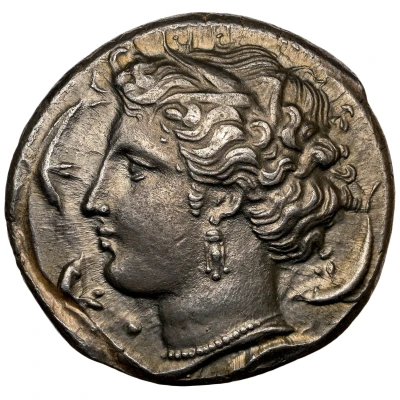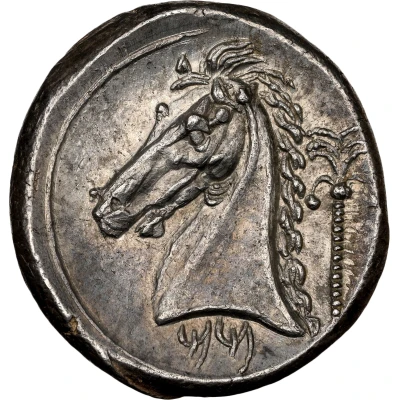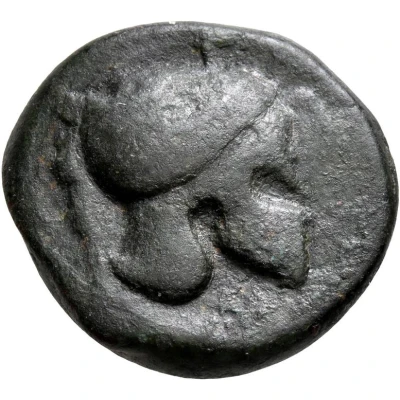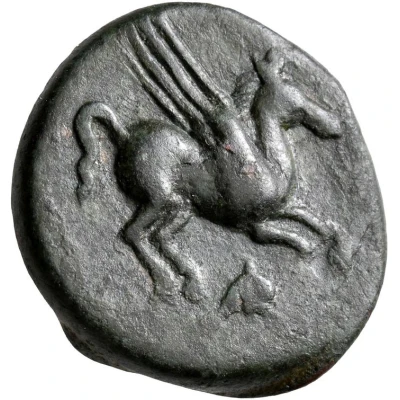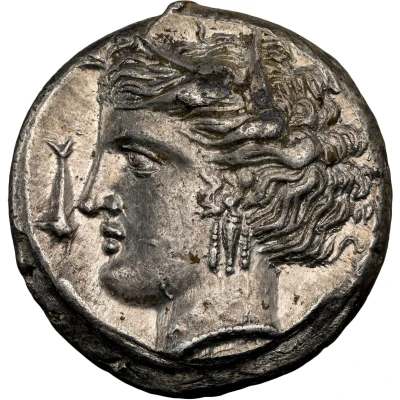
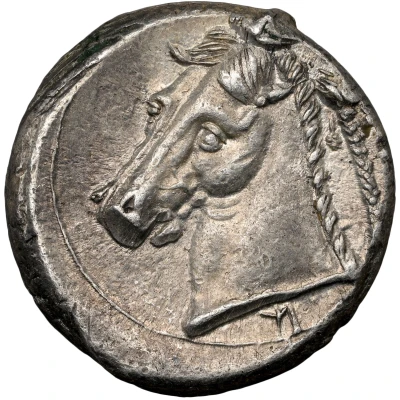

© Heritage Auctions
Tetradrachm 320 BC - 300 BC
| Silver | 16.91 g | 24 mm |
| Issuer | Entella (Sicily) |
|---|---|
| Type | Standard circulation coin |
| Years | 320 BC - 300 BC |
| Value | Tetradrachm (20) |
| Currency | Litra |
| Composition | Silver |
| Weight | 16.91 g |
| Diameter | 24 mm |
| Shape | Round (irregular) |
| Technique | Hammered |
| Orientation | Variable alignment ↺ |
| Demonetized | Yes |
| Updated | 2024-10-10 |
| Numista | N#379173 |
|---|---|
| Rarity index | 100% |
Reverse
Horse head left; palm tree with two clusters of dates behind, linear border.
Script: Phoenician
Lettering: 𐤌
Comment
The location of the main Carthaginian mint in Sicily identified by Punic inscription as "The Camp" has long been a matter of conjecture and dispute. Recent research, adopted by Oliver Hoover in his Handbook of Coins of Sicily (CNG 2012), suggests the "Camp" mint to have been Entella, a fortress-like city located in central-west Sicily. Founded by the Trojans in the 500s BC, Entella was conquered by a group of Campanian mercenaries in about 410 BC who quickly sold their services to the Carthaginians (alternatively, the Campanians might have been employed by Carthage before they took the city). The city remained a Punic stronghold through most of the fourth century, although the Syracusan tyrant Timoleon briefly drove them out circa 342 BC (a peace treaty dividing Sicily, into Greek and Carthaginian spheres of interest in 338 BC, returned Entella to Punic control). The Siculo-Punic coinage of Entella seems to have been intended mainly to pay mercenary soldiers who were used to being paid in Greek coin, as the silver tetradrachms adhere closely to the Attic weight standard. Designs were usually based on the ubiquitous issues of Syracuse (obverse), but with reverses displaying their Carthaginian allegiance (the palm tree, phonix in Greek, is likely a canting pun on the term Phoenician). Horses also feature prominently, likely referring to the outstanding cavalry of the Carthaginians and their Campanian allies.Interesting fact
One interesting fact about this coin is that it features a unique blend of Greek and indigenous Sicilian influences in its design. The obverse side of the coin depicts the profile of the Greek goddess Athena, while the reverse side features a Sicilian mythological figure, the "Kamerton", which is a creature with the body of a lion and the head of an eagle. This blending of cultures reflects the rich history of Sicily as a melting pot of different civilizations.
